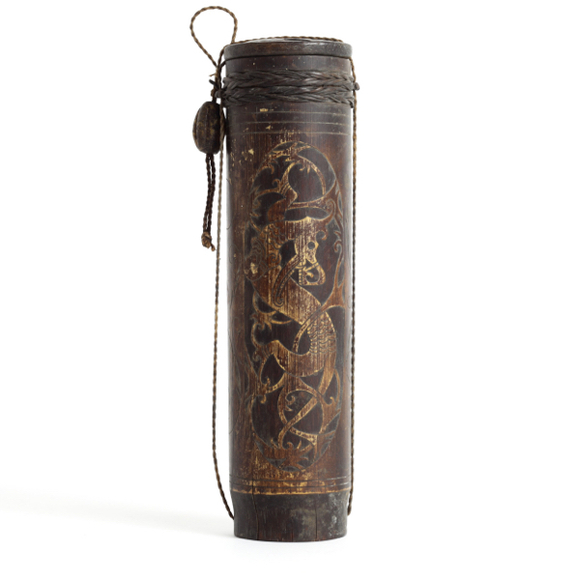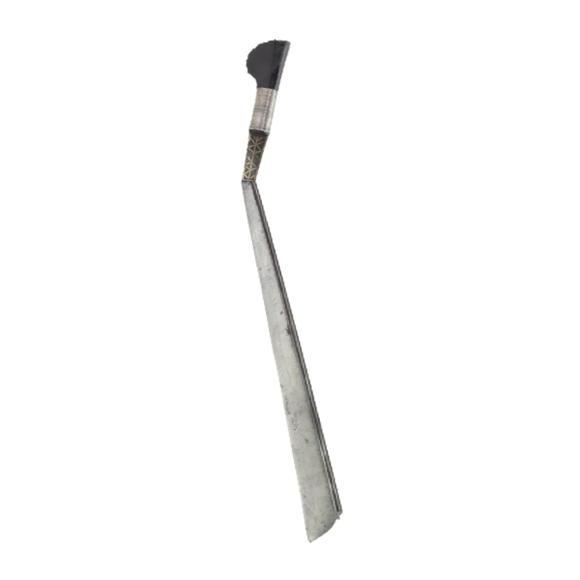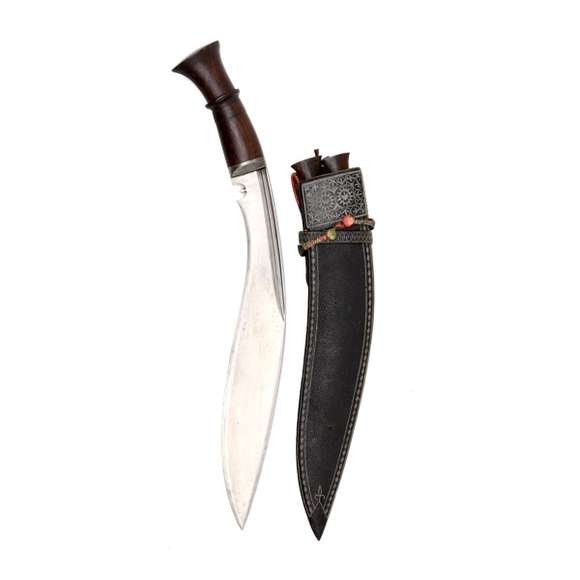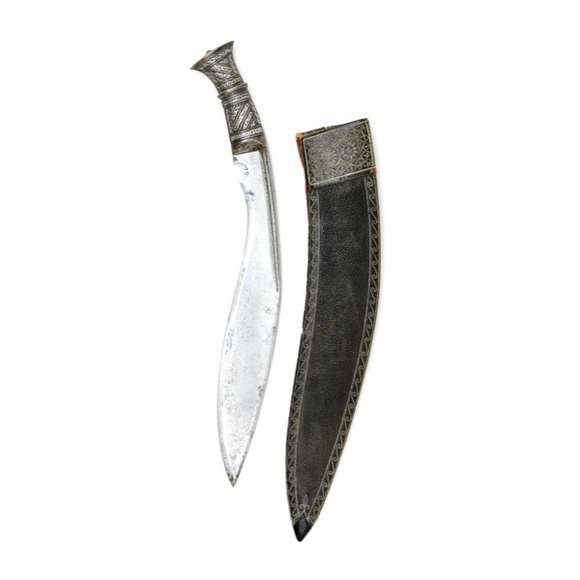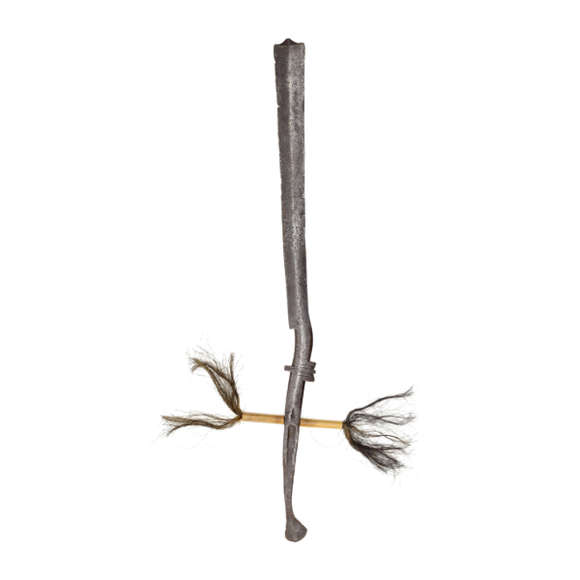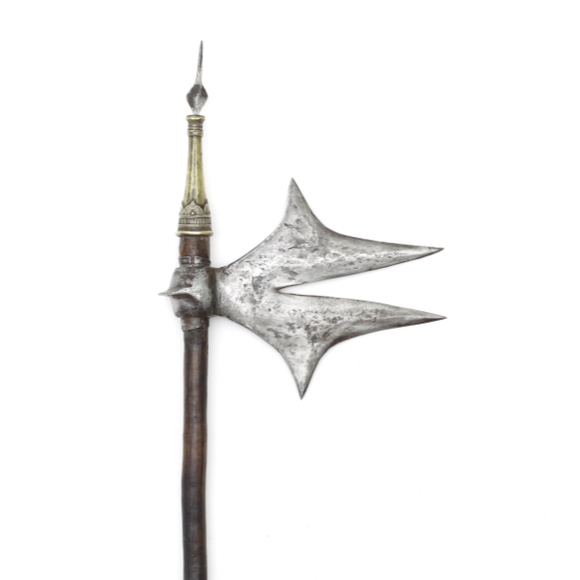Carved with typically Dayak aso "dog dragon" motifs.

218.7 cm
189.5 cm
34 mm at mouth
22 mm at muzzle
11 mm
Length 28.9 cm
Width 47 mm
Thickness at base 7.5 mm
102 cm from tip
Iron, wood, brass, rattan
Central Borneo
Indonesia
19th century
Introduction
The blowgun is the main distance weapon of the Dayak, used in both hunting and warfare. It shoots small poisoned darts with speeds exceeding 180 km/h, and is very accurate up to about 25 meters with a max effective range of about 50 meters.1
The darts are made of a sliver of hardwood or the rib of a palm leaf, with a cone of soft wood or tree marrow. The poison is a plant-based, fast-working nerve poison that is dangerous when it comes into the bloodstream but not when ingested, so animals killed this way can still be eaten.
For more information, see my glossary article: Sumpitan
Notes to introduction
1. Albert van Zonneveld; Traditionele wapens van Borneo, De uitrusting van de koppensnellers, Deel II, speren en blaasroeren. Sunfield Publishing, Leiden, 2017. Pages 61-62.
This example
Made of a dark, heavy wood, the blowgun retains its full length as can be seen from the widening at the mouth end. An iron sight is affixed at the opposite end, along with a spearhead, with rattan bindings.
The substantial spearhead is double edge and leaf-shaped, with decorative file work at the side of the base. It is made of laminated steel, which is noteworthy because the mandau sword usually is not.
The spearhead has the very rare addition of an aso (dog dragon) motif inlaid in the blade, visible on both sides. Such inlays are frequently found on the blades of Dayak swords but this is the only Dayak blowgun I am aware of -and there are many in Dutch museum collections- that has it.
The style of the aso reminds of such work on blades done by among others the Kayan of the Upper Makahan river.

There is also a small paper label still affixed to it, with the old collection number "154".

Condition
Some chips of wood missing at the mouth end, otherwise in very good, original condition. Bindings still solid.












An understated, elegant khukuri of substantial proportions with fine layered blade.
With iron, silver overlaid hilt. Its associated scabbard features fine quillwork.
This peculiar sword was used by the Garo people of Assam for fighting, clearing the jungle, and animal…

